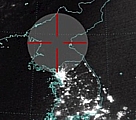 |
|
North Korea mistakenly believes there are U.S. nuclear weapons in South Korea. |
By Hans M. Kristensen
The North Korean newspaper Rodong Sinmun reportedly has issued a statement saying the U.S. has 1,000 nuclear weapons in South Korea. In this regional war of rhetoric it is important to at least get one fact right: The United States does not have nuclear weapons in South Korea. It used to – at some point close to 1,000 – but the last were withdrawn in 1991.
The only nuclear weapons the United States has in the Pacific today are the hundreds of warheads deployed on Trident II D5 sea-launched ballistic missiles on board eight Ohio-class nuclear-powered submarines patrolling in the Pacific Ocean. Some of them may be earmarked for potential use against targets in North Korea. Other weapons for bombers could be moved into the region if necessary, but they’re not today.
The North Korean obsession with the U.S. nuclear “threat” might be seen as confirmation that the nuclear deterrent works and hopefully will deter North Korea from attacking anyone. But the flip side of the coin is to what extent the U.S. nuclear posture in the Pacific – past and present – helps feed the North Korean nuclear rhetoric and perhaps even ambitions.
Additional information: A history of U.S. nuclear weapons deployment to and withdrawal from South Korea.
Without information, without factual information, you can’t act. You can’t relate to the world you live in. And so it’s super important for us to be able to monitor what’s happening around the world, analyze the material, and translate it into something that different audiences can understand.
Russia currently maintains nearly 5,460 nuclear warheads, with an estimated 1,718 deployed. This represents a slight decrease in total warheads from previous years but still positions Russia as the world’s largest nuclear power alongside the United States.
Nuclear weapons budgeting is like agreeing to buying a house without knowing the sales price, the mortgage rate, or the monthly payment.
The United States Air Force has forward deployed about one-third of its B-2 stealth bombers to Diego Garcia, or about half the B-2s considered fully operational at any given time.